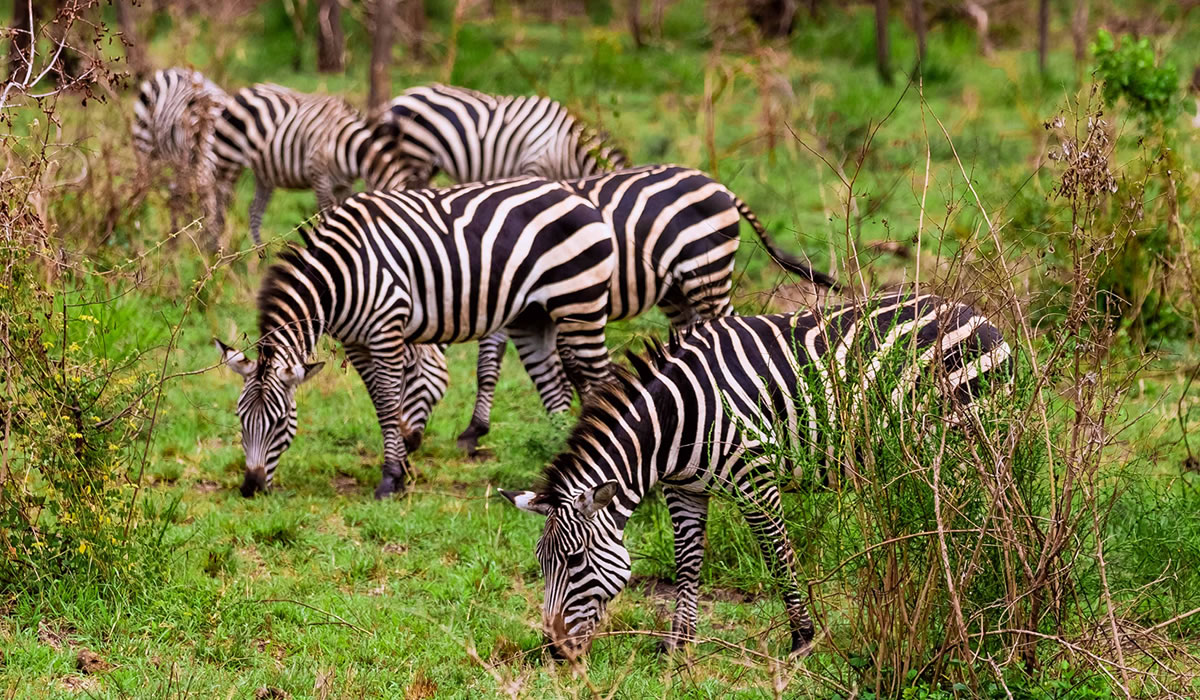Tucked away in the northeastern corner of Rwanda, along the border with Tanzania, Akagera National Park stands as a testament to the country’s remarkable conservation efforts and natural beauty. Covering approximately 1,122 square kilometers, this park is Rwanda’s largest protected wetland and the last remaining refuge for savannah-adapted species in the country. Named after the Akagera River that flows along its eastern boundary, the park boasts a stunning diversity of landscapes, from open plains and savannahs to woodlands, swamps, and a chain of scenic lakes. It is one of Africa’s most compelling conservation success stories and a must-visit destination for nature lovers and wildlife enthusiasts.

Wildlife and Scenery
Akagera National Park offers a rare blend of diverse habitats and a rich assortment of wildlife. Over the past decade, dedicated conservation efforts led by African Parks and the Rwanda Development Board have reintroduced and protected key species, including lions and rhinos, making Akagera a Big Five park. Visitors can expect to see elephants, buffaloes, zebras, giraffes, hippos, crocodiles, leopards, and various antelope species like impalas, topis, and waterbucks. The reintroduction of black rhinos in 2017 and white rhinos in 2021 added a significant boost to the park’s biodiversity, cementing its status as one of the few places in East Africa where all five members of the Big Five can be spotted.
One of Akagera’s most captivating features is its scenery. Unlike the more mountainous terrain found in much of Rwanda, Akagera offers a quintessential African savannah experience. Its landscapes are a mosaic of rolling hills, vast plains, and papyrus-fringed lakes. Lake Ihema, the second-largest lake in Rwanda, is a focal point of the park and a hub for aquatic life. The lake and its surrounding wetlands are teeming with hippos, Nile crocodiles, and a dazzling array of birdlife, making it a paradise for birdwatchers.
Activities in Akagera National Park
Visitors to Akagera can enjoy a wide range of activities that cater to different interests, from game drives to boat safaris and community experiences. The park is best explored on a guided game drive, which increases the chances of spotting elusive predators like lions and leopards. These drives can be arranged through the park’s visitor center or via local tour operators and can take place in the early morning or late afternoon when animals are most active.
A boat safari on Lake Ihema is another highlight and offers a unique perspective of the park’s wildlife. As the boat glides through the water, guests can observe hippos wallowing in the shallows, crocodiles sunning on the banks, and flocks of birds soaring above the papyrus beds. Over 500 bird species have been recorded in the park, including rare and endangered species like the shoebill stork and papyrus gonolek, making it one of the best birding destinations in Africa.
For those seeking a more intimate and immersive experience, Akagera also offers guided nature walks and behind-the-scenes conservation tours. These walks, led by trained rangers, allow visitors to explore the park on foot and learn about the flora, animal tracks, and the park’s complex ecosystems. The conservation tours provide a deeper insight into Akagera’s management strategies, anti-poaching initiatives, and wildlife monitoring techniques.
Cultural tourism is another enriching option, with visits to nearby communities offering a glimpse into Rwandan rural life. Visitors can participate in activities like cattle herding, traditional food preparation, or banana beer brewing, fostering a greater appreciation for local culture and its connection to the park.
Best Time to Visit
Akagera National Park is open year-round, but the best time to visit largely depends on what you want to experience. The dry seasons, from June to September and December to February, are considered the optimal times for wildlife viewing. During these months, animals congregate around water sources, and the vegetation is less dense, making it easier to spot game.
The wet seasons, which span from March to May and October to November, offer lush landscapes and are excellent for birdwatching, as migratory birds are present. However, rain can make some roads muddy and more challenging to navigate. That said, the park’s relatively low elevation (compared to other parts of Rwanda) means it’s generally warmer and drier than the rest of the country, making it a viable destination even in the rainy season.
How to Get There
Getting to Akagera National Park is relatively easy, especially from Rwanda’s capital, Kigali. The park lies approximately 110 kilometers (about 2.5 to 3 hours by road) east of Kigali. The road to the park is well-maintained, and self-driving is possible for those comfortable navigating Rwandan roads. The main entrance to the park is at the southern gate near the town of Kayonza, which also serves as the administrative hub and starting point for most activities.
For those without private transport, several tour operators in Kigali offer day trips or multi-day safaris to Akagera. These packages often include transport, entrance fees, accommodation, and guided activities. Although there is a northern gate, it is currently used only as an exit point to help manage visitor flow and reduce congestion.
Accommodation Options
Akagera offers a range of accommodation options, from budget-friendly campsites to luxury lodges. The most upscale option is Magashi Camp, a luxury tented camp located in a private concession in the northern part of the park, offering exclusive wildlife experiences and high-end amenities. Mid-range options include Ruzizi Tented Lodge, an eco-lodge nestled on the shores of Lake Ihema, and Akagera Game Lodge, which is located near the park entrance and offers hotel-style amenities with stunning views of the park.
For budget travelers, the park has several campsites with basic facilities. These are ideal for adventurers who enjoy self-catering and a more rustic experience. Camping in Akagera allows visitors to fully immerse themselves in nature, often with the calls of wild animals echoing in the background.
Akagera National Park is a remarkable destination that showcases Rwanda’s lesser-known but equally breathtaking natural side. With its diverse ecosystems, abundant wildlife, and wide range of activities, it provides a compelling alternative to the more famous mountain gorilla treks in the Volcanoes National Park. Whether you’re on a quest to see the Big Five, eager to photograph birds, or simply looking to enjoy the tranquility of the African wilderness, Akagera has something to offer. Its accessibility, conservation success story, and scenic beauty make it one of East Africa’s rising stars in eco-tourism, a place where nature thrives and visitors leave with unforgettable memories.

